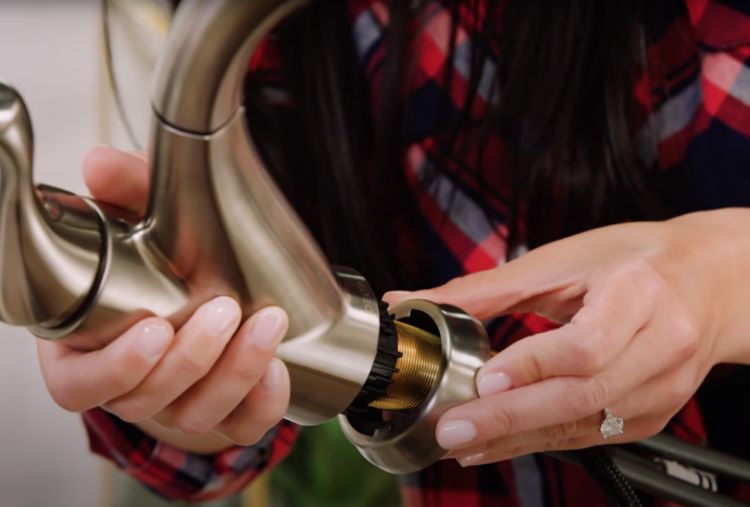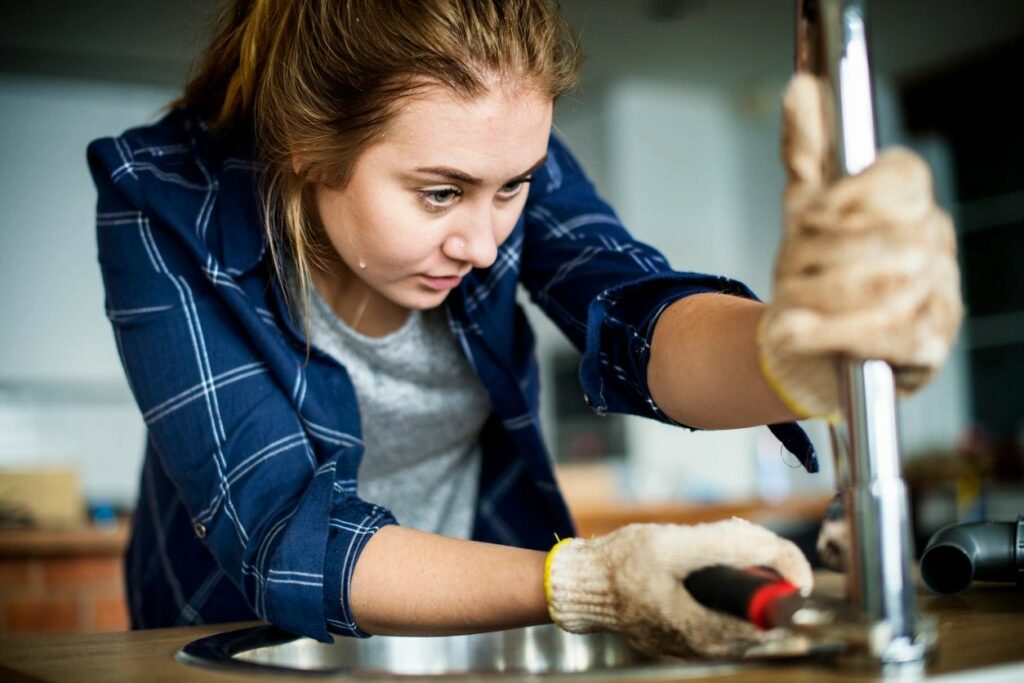Just how do you feel in relation to How to Fix a Dripping or Leaky Faucet ?

Leaking taps could look like a small hassle, yet their impact goes beyond just the inconvenience of the noise. From wasting water to sustaining unnecessary financial costs and health and wellness risks, disregarding a leaking faucet can lead to various effects. In this post, we'll explore why it's vital to resolve this typical home concern immediately and successfully.
Waste of Water
Environmental Influence
Dripping faucets contribute substantially to water waste. According to the Epa (EPA), a single faucet leaking at one drip per secondly can lose greater than 3,000 gallons of water each year. This not just stress water sources but additionally affects ecological communities and wildlife based on them.
Financial Prices
Raised Water Bills
Beyond the environmental impact, leaking faucets can pump up water costs considerably. The collected wastage gradually converts right into greater energy costs, which might have been stayed clear of with prompt repair services.
Prospective Home Damages
Additionally, long term leaking can result in harm to components and surfaces bordering the faucet. Water accumulation can create discoloration, rust, and even architectural issues if left unattended, resulting in additional repair work costs.
Wellness Worries
Mold and Mildew Growth
The continuous existence of dampness from a leaking faucet develops an optimal environment for mold and mildew and mildew development. These fungis not just jeopardize indoor air high quality but likewise position wellness threats, particularly for people with respiratory conditions or allergic reactions.
Waterborne Diseases
Stagnant water in trickling taps can become a breeding ground for bacteria and other pathogens, increasing the threat of waterborne diseases. Impurities such as Legionella bacteria grow in stationary water, potentially leading to significant health problems when ingested or breathed in.
DIY vs. Professional Repair service
Benefits and drawbacks of DIY Fixing
While some might attempt to take care of a trickling tap themselves, do it yourself repair services come with their own collection of obstacles. Without correct knowledge and devices, DIY efforts can aggravate the problem or lead to insufficient repair work, lengthening the problem.
Benefits of Working With an Expert Plumber
Working with a professional plumber guarantees that the underlying reason for the leaking tap is addressed efficiently. Plumbers possess the know-how and tools to detect and fix tap concerns efficiently, conserving time and lessening the risk of additional damages.
Step-by-Step Guide to Fixing a Dripping Tap
Tools Required
Prior to attempting to fix a dripping tap, gather the needed tools, consisting of a flexible wrench, screwdrivers, substitute parts (such as washers or cartridges), and plumber's tape.
Typical Tap Issues and Their Solutions
Recognize the type of faucet and the certain issue creating the drip. Common troubles consist of worn-out washing machines, rusty shutoff seats, or damaged O-rings. Describe maker guidelines or on-line tutorials for detailed advice on fixings.
Safety nets
Normal Upkeep Tips
To stop trickling taps, carry out regular upkeep such as cleansing aerators, examining for leaks, and replacing worn-out components without delay. Additionally, consider installing water-saving devices or upgrading to much more efficient fixtures.
Importance of Prompt Repairs
Addressing leaking faucets as quickly as they're discovered prevents further water waste and prospective damages, ultimately saving both water and money over time.
Impact on Building Value
Perception of Well-Maintained Building
Preserving a residential property in good condition, including attending to maintenance concerns like trickling taps, enhances its viewed value and worth among prospective buyers or renters.
Influence on Resale Worth
Features with properly maintained plumbing components, consisting of taps, command greater resale worths in the realty market. Dealing with leaking faucets can contribute to a favorable perception during residential property assessments and negotiations.
Ecological Obligation
Specific Payment to Preservation
Taking obligation for taking care of dripping taps straightens with more comprehensive efforts towards water preservation and environmental sustainability. Every person's activities collectively make a significant influence on protecting precious sources.
Sustainable Living Practices
By focusing on prompt fixings and embracing water-saving habits, individuals add to sustainable living methods that profit both present and future generations.
Verdict
Addressing a leaking tap goes beyond simple convenience; it's a crucial step toward saving water, lowering economic prices, and safeguarding health and wellness and building. Whether through DIY repairs or professional aid, doing something about it to deal with trickling taps is a tiny yet impactful method to promote responsible stewardship of resources and add to a much healthier, a lot more sustainable future.
Most Common Reasons for a Leaky Faucet and How to Stop the Drip
Whether it’s your kitchen faucet leaking or a bathroom faucet leaking, one leaky faucet can waste anywhere from three to 30 gallons of water every single day. If the constant drip-drip-drip doesn’t get your attention, your water bill will. The good news is that, by following a few simple steps, chances are pretty good you can fix the problem yourself.
Why is it dripping?
Before you start taking things apart, let’s break down some of the most common causes of a leaky faucet.
Bad O-ring.
A cartridge is a valve that controls the flow of water into the faucet spout. On cartridge faucets there’s an O-ring—the little disc attached to the stem screw that holds the faucet handle in place. If it’s loose or worn-out, it can cause your sink handle to leak. Of course, the cartridge itself could be worn out. If that’s the case, make sure you replace it with the exact same kind.
Corroded valve seat.
The valve seat connects the faucet and the spout. If the leak seems to be coming from the spout, it might be because a buildup of water sediment has corroded the valve seat.
Worn-out washers or seals.
A leaky spout could be caused by a bad washer that rests against the valve seat. It’s just a matter of time before friction takes its toll. It could also be the wrong size washer or one that’s been installed incorrectly. Water sediments can also corrode inlet and outlet seals.
Water pressure.
If the faucet only drips now and then, or when you turn the handles a certain way, you should probably check your home’s water pressure.
Loose or broken parts.
The adjusting ring and packing nuts in the stream screw can become loose over time, causing your sink handle to leak. Try tightening or replacing the packing nut. If the leak is coming from the pipes underneath the sink, you probably have a broken pipe or fitting. If that’s the case, you should definitely call a plumber.
Know your faucet.
Faucets come in a variety of types. Each one has its own assembly—and its own possible causes of leaks. Learning about the four most common kinds of faucets will help you know how to take them apart and make any repairs.
How to stop a leaky faucet
Fixing that leaky faucet doesn’t have to take a lot of time, money, or expertise. It’s usually a simple matter of replacing a worn-out washer or gasket, a loose O ring, or another part. Chances are really good you can do this yourself if you follow these simple steps.
Shut off the water.
Before you tackle the faucet, cut off the water supply to the sink. There should be one valve for hot and one for cold. Hand-turn them clockwise with your hands till they close. If there are no valves under the sink, head to the basement and shut off the main water supply to the house. Then turn on the faucet until it empties out the water that’s still in the line and you’re ready to start. It’s a good idea to cover the sink drain with a plug or a rag so you don’t lose any small pieces and parts while you’re working.

We had been introduced to that article on from someone on another domain. Sharing is good. One never knows, you might be doing someone a favor. Many thanks for going through it.